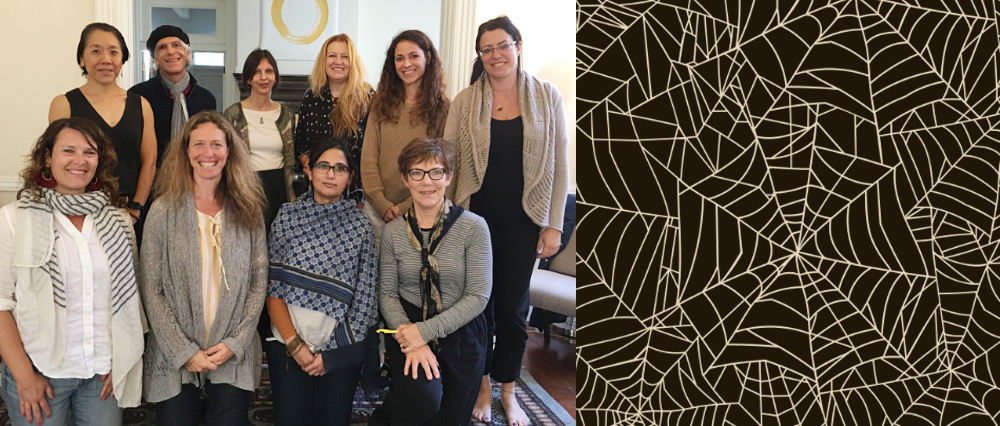by Fiona Brandon
During our recent Mindfulness Year fall retreat, Joe Loizzo emphasized to the cohort that the development of the self is “a creative project,” but one that is not always in our favor. “There is a tendency once we make an interpretation [about ourselves or an experience]…to forget it was an interpretation. [We] just stamp it with the seal of reality because for one moment [the interpretation] was serviceable.” It can be shocking to look under the hood of this habitual pattern and see that we create lifelong fundamental beliefs about ourselves, and the world around us, based on interpretations that may have been true in one moment, but are inaccurate for subsequent moments in our lives!

The year begins with an understanding of the webs we weave. Pictured on retreat are San Francisco students with Dr. Joe Loizzo (second in top row) and Fiona Brandon (second in bottom row).
Most of these interpretations coalesce when we are young children, or adolescents, and we are unaware in adulthood that we need to update these basic ideas about our sense of self. We keep relating to ourselves, and others, through a powerfully distorted lens of stitched together interpretations that have not been analyzed and reality tested. Joe explained, “Our brains are like smart spiders that weave out all these webs of symbolic information…What happens if you weave the web of symbolic information and leave it there? You get stuck in your own web, and you can’t move anywhere. That is not useful…That in a way is what we are suffering from…We have woven webs both culturally, socially, psychologically that we are stuck in because we forget that we made them. We do not know that we are web makers.”
Over the next 8 months, the San Francisco Mindfulness Year students will be exploring how we are web makers and how to untangle ourselves. Using the four foundations of mindfulness, the eight-fold path, neuropsychology and loving-kindness meditation, students will learn to reverse misdirected self forming patterns.
“The whole point of mindfulness is that I am not going to perceive mindlessly any more. I am not going to let my habits condition my thinking of me. I’m going to go back to the source of the primary process — just the facts — and then I am going to do my own conscious thinking about what I am going to do with this fact. How am I going to respond to it? How do I want to interpret it?”
With these words, Joe pointed to a way in which we can all use our creative endowment to reconstruct a more realistic and nurturing sense of self.
The first assignment I gave to the group was to name any physical, mental, and/or emotional cues that let us know we are looking at ourselves, or an interaction, through the lens of self-enclosure — the painful incorrect belief that we are fundamentally alone and therefore must live from a self protective bias. I was touched by the students’ responses as I could relate — all too well — to the cues they shared. The broad strokes of the responses revealed: physically feeling contracted and rigid; mentally apathetic or restless; feelings of anger, shame, sadness, self righteousness and a sense of being out of control.
The second part of the assignment was to name resources that students might use to counteract this tendency towards an isolated sense of self. The result was a rich list of antidotes: use positive self talk to remind ourselves not to take things too personally and to question that which we perceive to be absolutely true; use imagery to expand our sense of space as a way to counteract feelings of being trapped or caught in rigidity; remind ourselves of the kindness of loved ones and strangers; be compassionate with ourselves and others bolstered by Metta meditation.
We all are web makers. The good news is that we all have the creative intelligence to dissolve our misguided and unhealthy perceptions of ourselves. I hope our list of reactive cues and antidotes are helpful to the larger Nalanda Institute community. I look forward to sharing more in the coming months from the Mindfulness Year teachings!
Editor’s note: Fiona Brandon is the Director of the San Francisco Contemplative Psychotherapy Program. She reports here on the opening retreat of the Mindfulness Year in San Francisco. Find out more about the Contemplative Psychotherapy Program and view Fiona’s bio.
